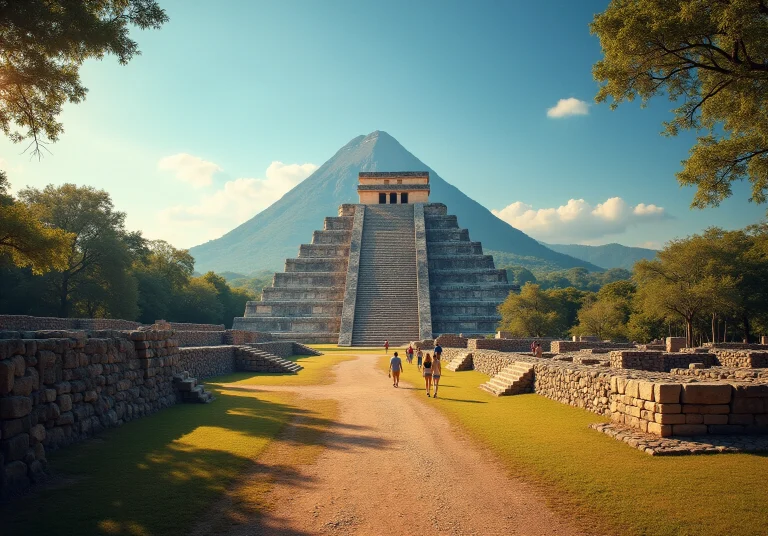Overview
This article takes you on an exciting journey through the fascinating world of pyramids in Mexico! You’ll discover significant examples like the Great Structure of Cholula and El Castillo at Chichen Itza, but did you know there are many more structures that could also be categorized as pyramids? It’s true!
Let’s dive into the rich historical context and architectural wonders brought to life by ancient civilizations such as the Aztecs, Maya, and Olmecs. Their contributions are not just impressive; they hold deep cultural significance that you’ll want to appreciate. And if you’re planning a visit, remember to take some time to prepare—these monumental sites deserve your attention and respect.
So, are you ready to explore? There’s so much to uncover, and I can’t wait for you to experience it all!
Key Highlights:
- Mexican pyramids were built by ancient civilizations such as the Aztecs, Maya, and Olmecs, each contributing unique architectural styles.
- The Pyramid of the Sun and Pyramid of the Moon are significant structures located at Teotihuacan, reflecting the civilization’s cosmological beliefs.
- These pyramids played vital roles in spiritual rituals, celestial observations, and the social order of ancient societies.
- The Great Structure of Cholula is noted as the largest pyramid by volume, while El Castillo at Chichen Itza is an iconic example of Mesoamerican architecture.
- When planning visits, consider key sites like Teotihuacan and Chichen Itza, focusing on their historical importance and accessibility.
- Arriving early and visiting on weekdays can help avoid crowds, especially at popular sites like Chichen Itza.
- Transportation can be a challenge; renting a car or booking guided tours is recommended for convenience.
- Weather conditions in Mexico can be hot; travellers should dress appropriately and stay hydrated.
- Safety is a concern; tourists should stay informed about local conditions and respect cultural sensitivities at historical sites.
Introduction
In the heart of Mexico, you’ll find a captivating tapestry of ancient history, woven through majestic pyramids that stand as testaments to the ingenuity of civilizations like the Aztecs, Maya, and Olmecs. These monumental structures aren’t just relics of the past; they embody rich narratives and cultural significance that continue to intrigue explorers and historians alike.
But here’s a question that often comes up: how many pyramids truly exist in Mexico? The answer reveals a complex landscape of architectural marvels just waiting to be uncovered. So, let’s dive in and explore this fascinating journey together!
Explore the Historical Context of Mexican Pyramids
Starting your journey through Mexican monuments is all about embracing their rich historical context! These awe-inspiring structures were primarily built by ancient civilizations like the Aztecs, Maya, and Olmecs, each leaving a unique mark on architectural styles and cultural significance. Take, for instance, the Pyramid of the Sun, which stands an impressive 213 meters tall with 20 floors, and the Pyramid of the Moon, measuring about 45 meters on each side and 45 meters high at Teotihuacan. These aren’t just monumental edifices; they reflect the cosmological beliefs held by the Teotihuacan civilization, which thrived from 100 BCE to 750 CE.
These structures played a vital role in spiritual rituals, celestial observations, and the social order of their time. For example, the Pyramid of the Sun symbolizes the Axis-Mundi, connecting the heavens and the earth. Mariana Montes notes, “Constructing temple structures was an architectural obligation for the Aztecs because of their religious significance.” Understanding the diverse intentions behind these structures will surely enhance your experience!
As you plan your exploration, consider how many pyramids in Mexico you want to visit. Focus on their historical significance and the stories they tell about the civilizations that built them. Recent discoveries, like evidence of early primate captivity at Teotihuacan, shed light on the complex interactions and cultural exchanges that occurred in these historical societies. By appreciating the narratives woven into these significant locations, you can forge a deeper connection with the rich history of Mexico’s ancient cultures.
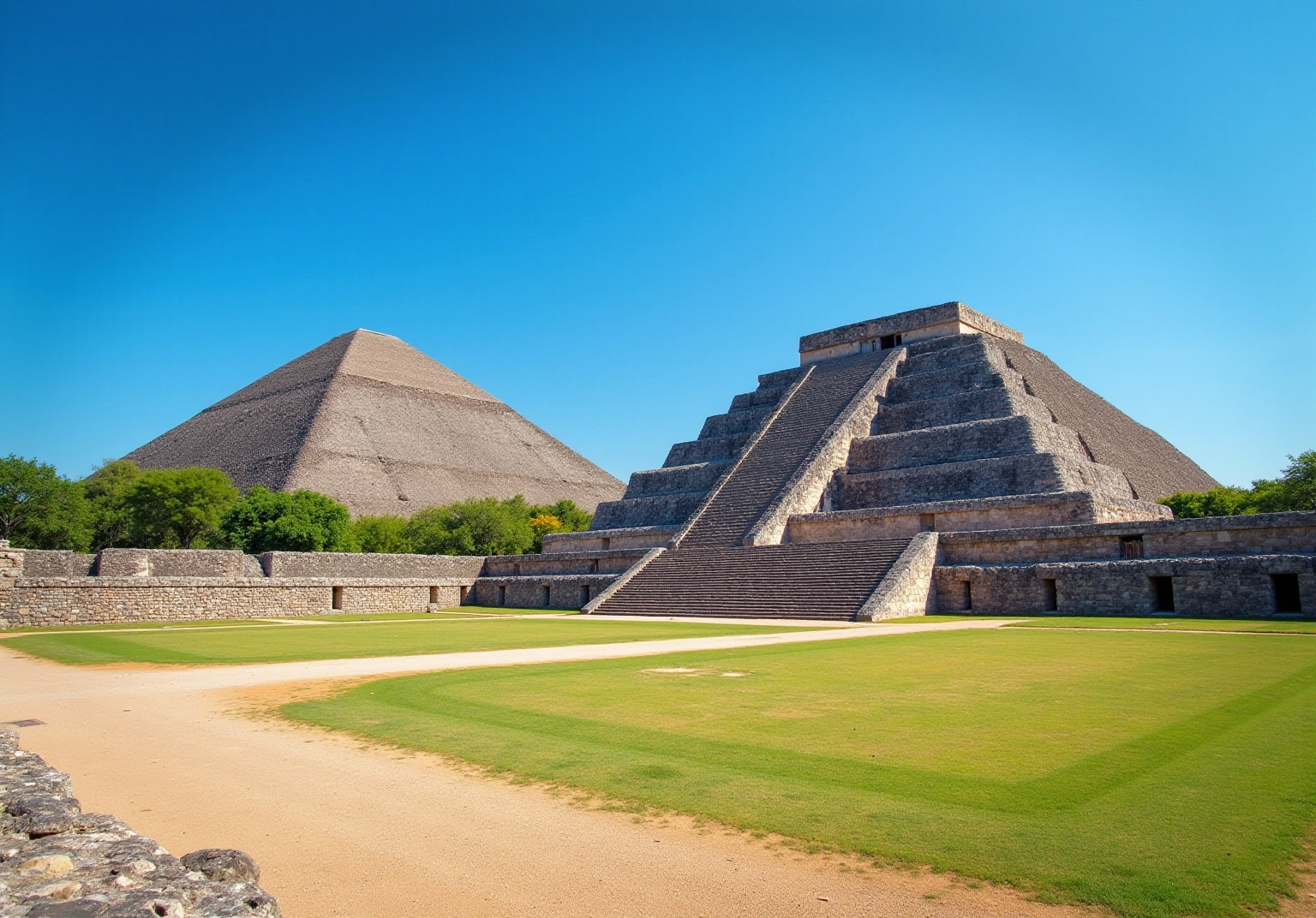
Identify the Total Number of Pyramids in Mexico
Mexico is a treasure trove of diverse structures, leading many to wonder how many pyramids in Mexico are well-preserved and recognized as significant archaeological sites. But wait—there are many more structures that could also be categorized as similar forms, depending on their architectural characteristics! When discussing how many pyramids in Mexico, notable examples include:
- The Great Structure of Cholula, the largest edifice by volume in the world
- The iconic El Castillo at Chichen Itza
To truly appreciate these marvels, I recommend checking out resources like the Wikipedia entry on Mesoamerican structures or travel guides that highlight these incredible edifices. This knowledge will help you grasp the vastness of Mexico’s ancient architectural heritage and plan your itinerary accordingly. You won’t want to miss out on these experiences!
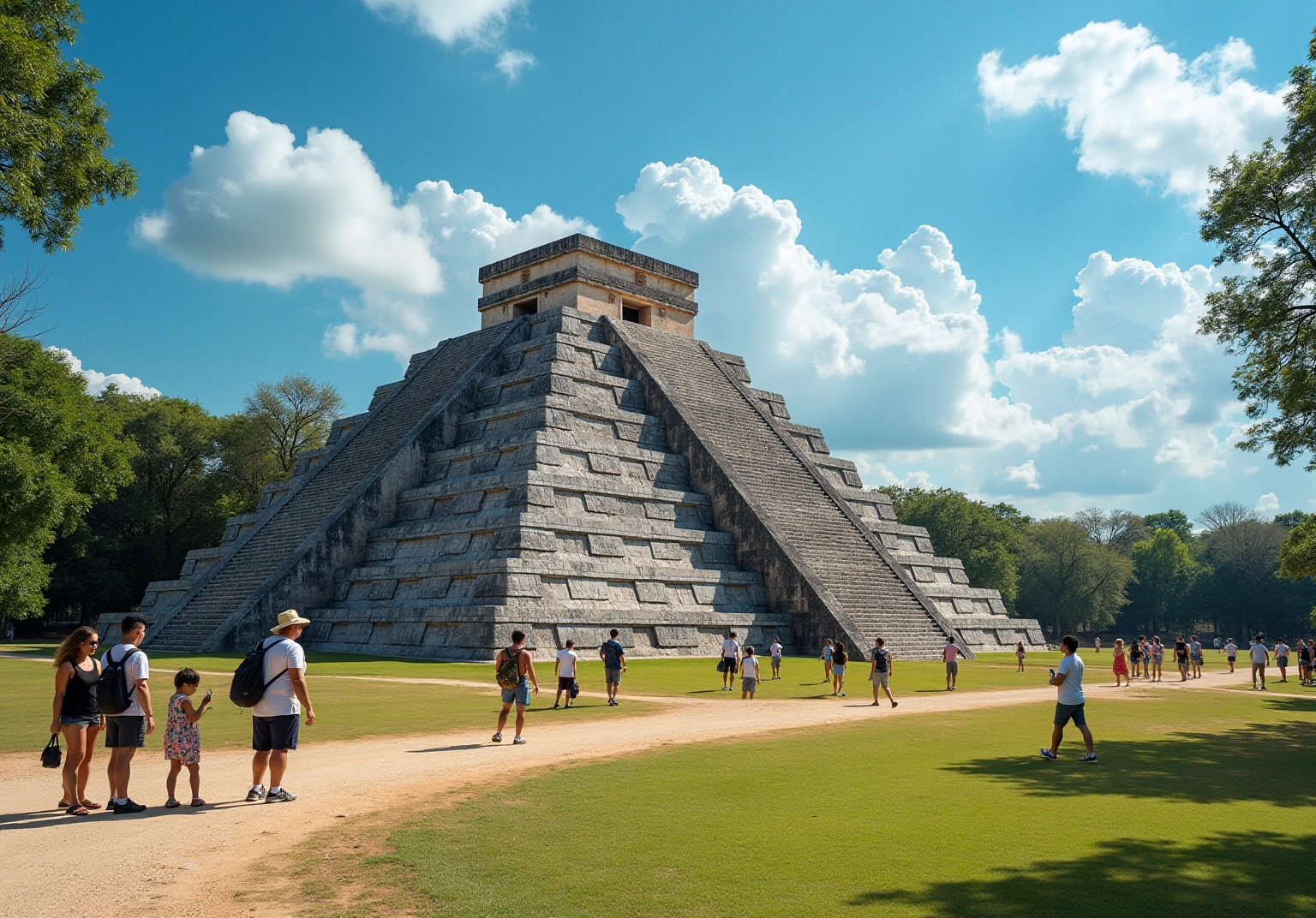
Plan Your Visits to Key Pyramids Across Mexico
When planning your visits to the pyramids, consider these exciting steps:
- Research Key Sites: Think about which structures you want to explore based on their historical importance and how easy they are to access. Popular choices like Teotihuacan, Chichen Itza, and Tulum each offer unique insights into ancient civilizations, and many travelers wonder how many pyramids in Mexico there are that you won’t want to miss!
- Check Accessibility: Some pyramids are easier to get to than others. For instance, Teotihuacan, a site that contributes to the question of how many pyramids in Mexico, is just an hour from Mexico City, with buses running every 15-30 minutes from 6 AM to 6 PM. It’s a popular day trip, while other sites might require a bit more travel time and planning.
- Plan Your Itinerary: Make sure to allocate enough time for each site. A trip to Teotihuacan usually takes a full day, giving you the chance to learn about how many pyramids in Mexico, such as the Pyramid of the Sun, the Pyramid of the Moon, and the Avenue of the Dead. I recommend planning for about seven hours to really soak in its grandeur. Similarly, when considering how many pyramids in Mexico, Chichen Itza deserves a dedicated visit to appreciate its significance fully.
- Consider Guided Tours: Hiring a local guide can really enhance your experience! They provide in-depth knowledge about the pyramids and their cultural significance, often sharing historical context that enriches your understanding of these ancient structures.
- Get Ready for the Visit: Don’t forget to bring essentials like water, sunscreen, and comfortable shoes. Many locations require walking and climbing steep steps, so staying hydrated is crucial—especially since water isn’t sold inside the gates. Trust me, you’ll want to be prepared to enjoy your adventure!
- Timing Your Visit: Arrive early to dodge the crowds, especially at popular spots like Chichen Itza, which can get particularly busy during peak tourist seasons. I recommend getting there around 8 AM to beat the heat and the crowds. Going on weekdays is also a great tip for enjoying the location with fewer visitors.
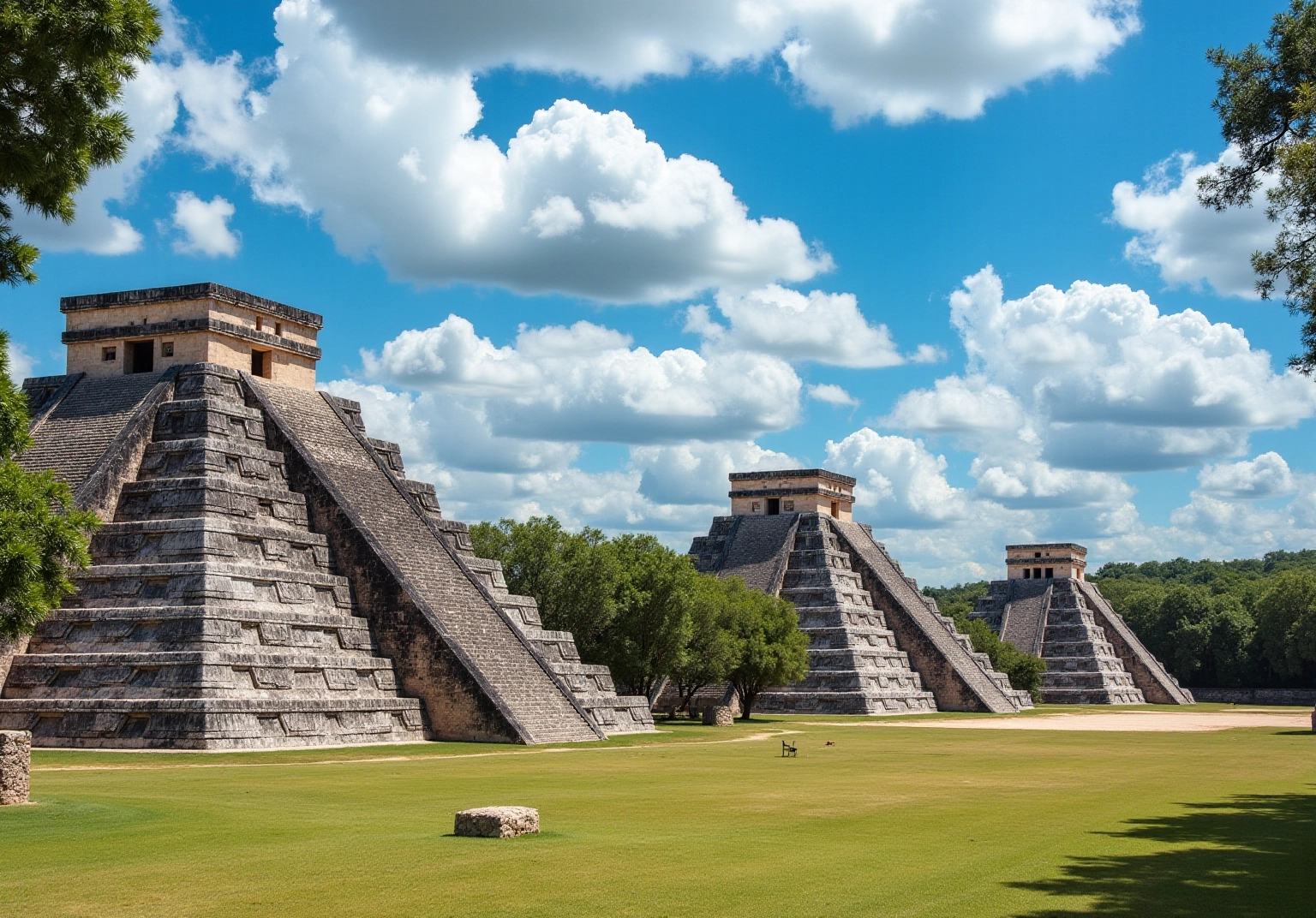
Troubleshoot Common Challenges When Visiting Pyramids
Visiting pyramids can present unique challenges, but don’t worry! Here are some common issues you might face and effective strategies to navigate them:
- Crowds: Popular sites often see heavy foot traffic, especially during peak tourist seasons. To make the most of your visit, schedule your trip on weekdays and aim to arrive early in the morning. In 2024, Chichen Itza is projected to welcome around 3,700,000 visitors, so avoiding peak times is key for a more enjoyable experience. This not only helps you dodge the crowds but also allows for cooler temperatures and better photography opportunities. As travel expert Lauren Cocking wisely advises, “Visiting on weekdays is advisable to avoid large crowds and enhance your experience, especially during the low tourist season.”
- Transportation: Relying on public transport can sometimes lead to delays and uncertainty. For a smoother experience, consider renting a car or booking a guided tour that includes transportation. This way, you can reach your destination without the hassle of navigating local transit systems.
- Weather Conditions: The climate in Mexico can be hot and sunny, so it’s essential to check the weather forecast before your visit. Dress in lightweight, breathable clothing, and don’t forget to pack hats, sunglasses, and plenty of water to stay hydrated while you explore.
- Safety Concerns: While many areas are generally safe for tourists, it’s always wise to stay informed about local safety conditions. Avoid traveling alone at night and stick to well-populated areas to enhance your safety.
Cultural sensitivity is essential, especially when considering how many pyramids in Mexico hold significant cultural and historical value. Chichen Itza primarily served as a ceremonial center for the Maya civilization from around 550 AD to 800 AD, contributing to the question of how many pyramids in Mexico were built during that time. It’s important to respect local customs by adhering to guidelines, refraining from climbing sacred sites, and being mindful of your behavior to honor the heritage of these ancient structures.
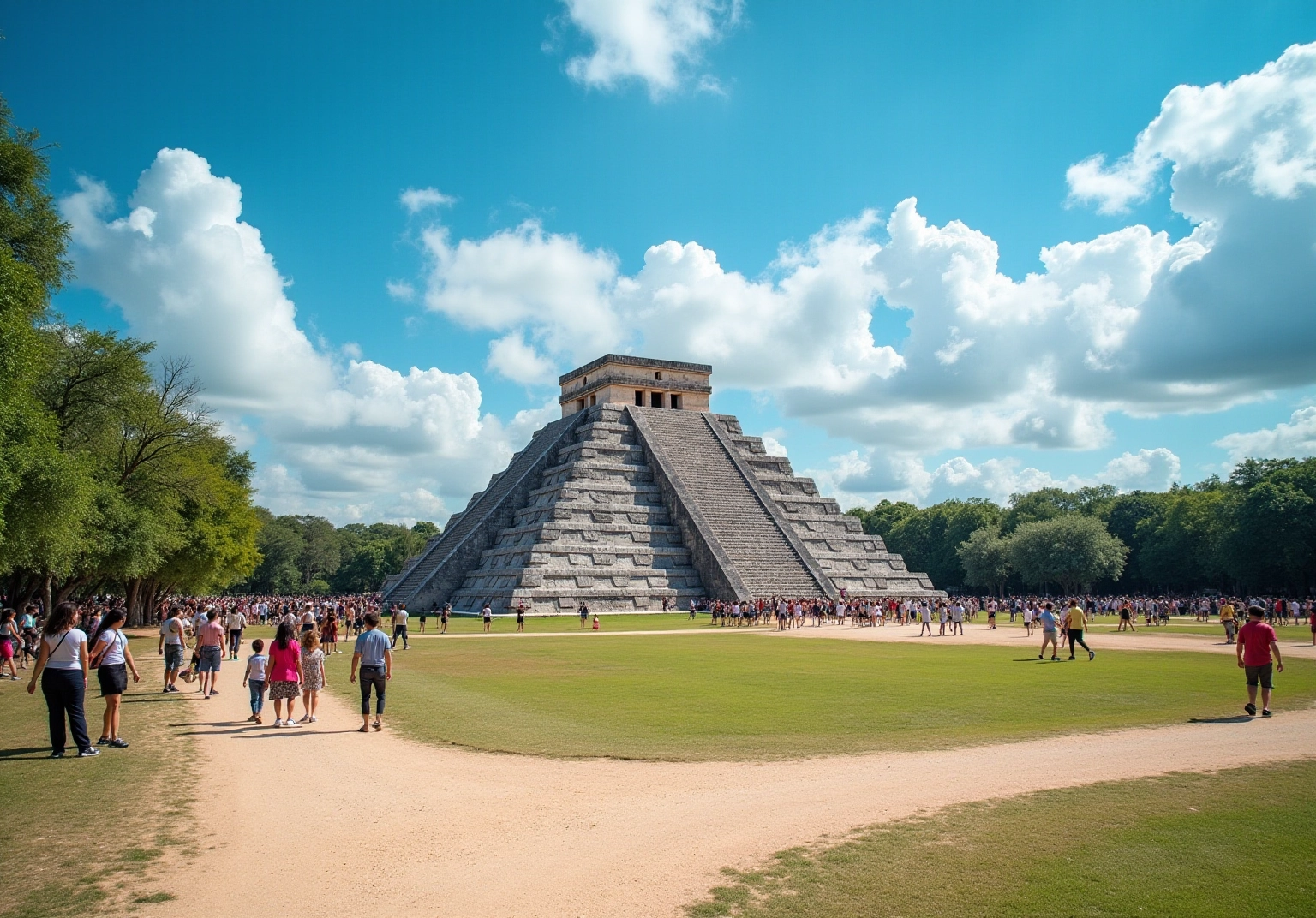
Conclusion
Exploring Mexico’s pyramids unveils a vibrant tapestry of history, culture, and architectural brilliance that has captivated many. These remarkable structures, created by ancient civilizations like the Aztecs, Maya, and Olmecs, stand not just as monumental feats of engineering but as vital links to the spiritual and social fabric of their time. When you understand their historical context, it deepens your appreciation for these awe-inspiring sites and invites you to engage more meaningfully with the narratives they embody.
Throughout this article, I’ve shared key insights about the significant pyramids in Mexico, including the towering Pyramid of the Sun and the expansive Great Structure of Cholula. I also highlighted practical tips for planning your visits—like researching key sites, checking accessibility, and timing your trips to dodge the crowds. Plus, addressing common challenges travelers face, such as transportation issues and cultural sensitivities, ensures you have a more enriching experience while exploring these ancient wonders.
Ultimately, your journey through Mexico’s pyramids is about more than just counting structures; it’s about immersing yourself in the profound cultural significance they hold. As interest in the historical context of these pyramids continues to grow, the call to action is clear: embrace the opportunity to explore, learn, and respect the heritage of these magnificent sites. Whether you’re planning a visit in 2025 or simply seeking to understand the importance of pyramids in Mexican culture, each encounter with these ancient marvels offers a chance to connect with the past and appreciate the intricate histories that shape our world today.
Frequently Asked Questions
What civilizations built the Mexican pyramids?
The Mexican pyramids were primarily built by ancient civilizations such as the Aztecs, Maya, and Olmecs.
What are some notable pyramids in Mexico?
Notable pyramids include the Pyramid of the Sun, which is 213 meters tall with 20 floors, and the Pyramid of the Moon, which measures about 45 meters on each side and is 45 meters high, located at Teotihuacan.
What was the purpose of the Mexican pyramids?
The pyramids played a vital role in spiritual rituals, celestial observations, and the social order of their time, reflecting the cosmological beliefs of the civilizations that built them.
What does the Pyramid of the Sun symbolize?
The Pyramid of the Sun symbolizes the Axis-Mundi, representing a connection between the heavens and the earth.
How did the construction of pyramids relate to Aztec beliefs?
Constructing temple structures was seen as an architectural obligation for the Aztecs due to their religious significance.
What recent discoveries have been made at Teotihuacan?
Recent discoveries include evidence of early primate captivity, which highlights the complex interactions and cultural exchanges that occurred in historical societies.
How can understanding the historical context of the pyramids enhance the exploration experience?
By appreciating the diverse intentions behind these structures and the narratives they tell, visitors can forge a deeper connection with the rich history of Mexico’s ancient cultures.









